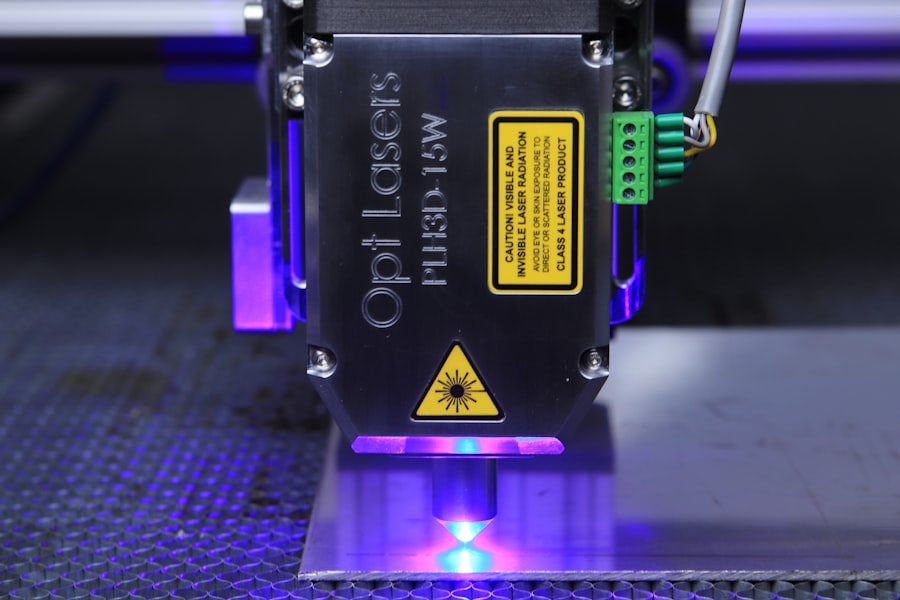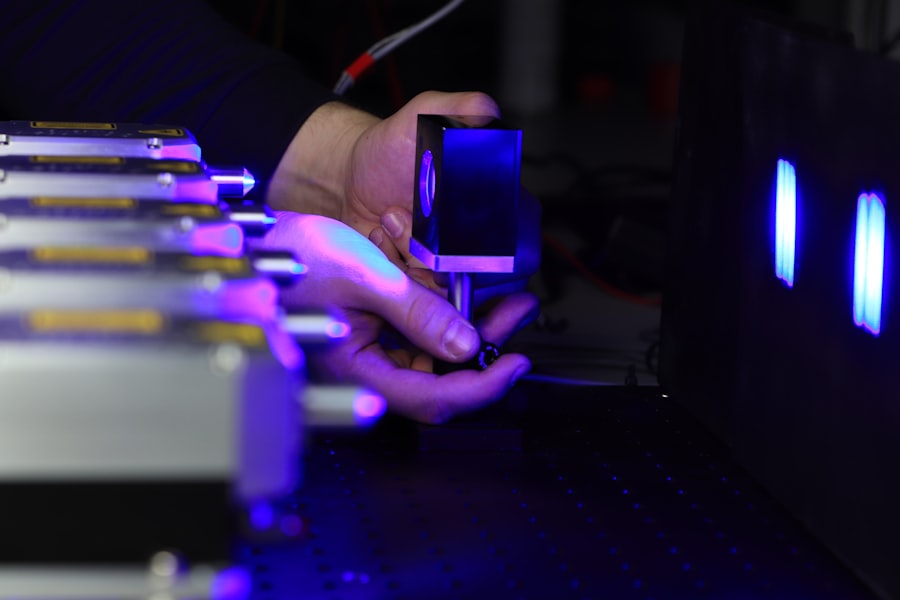Laser hair removal is a popular cosmetic procedure that utilizes concentrated beams of light to target and eliminate unwanted hair. The technology behind this method is based on the principle of selective photothermolysis, where the laser light is absorbed by the pigment in the hair follicles. This absorption generates heat, which effectively damages the follicles and inhibits future hair growth.
As you consider this option, it’s essential to understand how the process works and what to expect during your treatment sessions. Typically, the procedure involves a series of sessions, as hair grows in cycles, and not all hair is in the same growth phase at any given time. You may find that the number of sessions required varies based on your hair type, skin tone, and the area being treated.
Most individuals experience a significant reduction in hair growth after completing the recommended sessions, making it a long-term solution for those seeking to minimize or eliminate hair in specific areas.
Key Takeaways
- Laser hair removal uses concentrated light to target and destroy hair follicles, resulting in long-term hair reduction.
- Risks associated with laser hair removal include skin irritation, pigment changes, and the possibility of burns or scars.
- The benefits of laser hair removal include long-lasting results, reduced ingrown hairs, and smoother skin.
- Before laser hair removal, it’s important to avoid sun exposure, waxing, and plucking to ensure the treatment is effective.
- Aftercare for laser hair removal may include applying soothing creams, avoiding sun exposure, and following specific post-treatment instructions from the professional.
Risks Associated with Laser Hair Removal
While laser hair removal is generally considered safe, it is not without its risks. One of the most common side effects you might experience is skin irritation, which can manifest as redness, swelling, or a mild burning sensation in the treated area. These symptoms typically subside within a few hours to a few days.
However, it’s crucial to be aware that more severe side effects can occur, albeit rarely. For instance, changes in skin pigmentation may happen, particularly for individuals with darker skin tones, leading to either lightening or darkening of the skin in the treated area. Another risk to consider is the potential for scarring or blistering.
Although these outcomes are uncommon, they can occur if the procedure is not performed correctly or if proper aftercare is not followed. Additionally, there is a risk of eye injury if protective eyewear is not used during treatment. It’s essential to discuss these risks with your practitioner beforehand so that you can make an informed decision about whether laser hair removal is right for you.
Benefits of Laser Hair Removal

One of the most significant advantages of laser hair removal is its long-lasting results. Unlike traditional methods such as shaving or waxing, which require frequent maintenance, laser hair removal can lead to a permanent reduction in hair growth after completing the recommended sessions. This means you can enjoy smoother skin without the hassle of regular upkeep.
Many individuals find that this convenience significantly enhances their quality of life, allowing them to spend less time on grooming. In addition to its effectiveness, laser hair removal is also known for its precision. The technology allows for targeted treatment of specific areas without damaging the surrounding skin.
This precision makes it an excellent option for sensitive areas such as the face or bikini line. Furthermore, many people report that laser hair removal is less painful than other methods like waxing, making it a more comfortable choice for those who are sensitive to pain.
Preparing for Laser Hair Removal
| Aspect | Information |
|---|---|
| Procedure | Laser hair removal |
| Preparation | Avoid sun exposure, shaving, plucking or waxing |
| Duration | Multiple sessions over several weeks |
| Side effects | Redness, swelling, and irritation |
| Aftercare | Apply ice packs, moisturize, and avoid sun exposure |
Preparation is key to ensuring a successful laser hair removal experience. Before your first session, you should schedule a consultation with your chosen practitioner. During this appointment, you will discuss your medical history, skin type, and hair characteristics.
Your practitioner will also provide you with specific instructions on how to prepare for the procedure. This may include avoiding sun exposure and certain medications that can increase sensitivity. In the days leading up to your appointment, it’s advisable to refrain from waxing or plucking the hair in the treatment area.
Shaving is typically recommended instead, as it leaves the hair follicle intact while removing the surface hair that could interfere with the laser’s effectiveness. Additionally, you should avoid using any products that may irritate your skin, such as exfoliants or retinoids, to ensure your skin is in optimal condition for treatment.
Aftercare and Recovery
After your laser hair removal session, proper aftercare is essential for achieving the best results and minimizing any potential side effects.
To soothe your skin, applying a cool compress can be beneficial.
Your practitioner may also recommend using aloe vera gel or a gentle moisturizer to keep the area hydrated. It’s crucial to protect your skin from sun exposure following treatment. Wearing sunscreen with a high SPF is advisable to prevent pigmentation changes and protect your sensitive skin from UV rays.
Additionally, you should avoid hot baths, saunas, and strenuous exercise for at least 24 hours post-treatment to minimize irritation and allow your skin to recover properly.
Choosing a Qualified Professional

Qualifications and Expertise
Look for practitioners who are licensed and have extensive training in laser technology. It’s also beneficial to choose someone who specializes in laser hair removal, as they will have more experience and knowledge about different skin types and hair characteristics.
Research and Consultation
Before committing to a practitioner, take the time to read reviews and testimonials from previous clients. This can provide insight into their level of expertise and patient satisfaction. Additionally, don’t hesitate to ask questions during your consultation about their experience, the type of laser they use, and what safety measures they have in place.
Transparency and Priorities
A reputable professional will be transparent about their qualifications and will prioritize your safety and comfort throughout the process.
Alternative Hair Removal Methods
While laser hair removal offers numerous benefits, it’s essential to consider alternative methods that may suit your needs better. Traditional options like shaving are quick and easy but require frequent maintenance. Waxing provides longer-lasting results than shaving but can be painful and may cause skin irritation for some individuals.
Another alternative is electrolysis, which involves using an electric current to destroy individual hair follicles. This method is effective for all hair types and colors but can be time-consuming since each follicle must be treated separately. Additionally, there are various depilatory creams available that dissolve hair at the skin’s surface; however, these can sometimes cause allergic reactions or irritation.
Is Laser Hair Removal Right for You?
Deciding whether laser hair removal is right for you involves weighing its benefits against potential risks and considering your personal preferences regarding hair removal methods. If you’re looking for a long-term solution that offers convenience and precision, laser hair removal may be an excellent choice. However, it’s essential to consult with a qualified professional who can assess your unique situation and provide personalized recommendations.
Ultimately, understanding your options and being informed about what to expect can help you make a confident decision regarding your hair removal journey. Whether you choose laser hair removal or another method, prioritizing safety and comfort will ensure that you achieve the best possible results tailored to your needs.
If you are considering laser hair removal, it is important to weigh the risks and benefits before making a decision. According to a recent article on inlaserhairremoval.
It is crucial to do thorough research and consult with a qualified professional before undergoing any laser hair removal treatment.
FAQs
What are the benefits of laser hair removal?
Laser hair removal offers long-term reduction in hair growth, saving time and money on other hair removal methods. It can also lead to smoother skin and reduce the risk of ingrown hairs.
What are the risks of laser hair removal?
Some potential risks of laser hair removal include skin irritation, pigment changes, and the possibility of burns or blisters. In rare cases, scarring or infection may occur.
Is laser hair removal safe for all skin types?
Laser hair removal is generally safe for all skin types, but the effectiveness of the treatment may vary depending on the individual’s skin and hair color. It’s important to consult with a qualified professional to determine the best approach for your specific skin type.
How many sessions are typically needed for laser hair removal?
The number of sessions needed for laser hair removal varies depending on the individual’s hair type, color, and the area being treated. On average, most people require 6-8 sessions for optimal results.
Is laser hair removal permanent?
Laser hair removal can lead to long-term reduction in hair growth, but it is not always permanent. Some people may experience regrowth over time and may require maintenance sessions to sustain the results.
What should I consider before undergoing laser hair removal?
Before undergoing laser hair removal, it’s important to research and choose a reputable and experienced provider. It’s also crucial to disclose any medical conditions, medications, or skin sensitivities to the provider to ensure the safest and most effective treatment.





